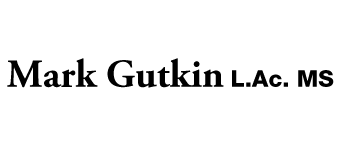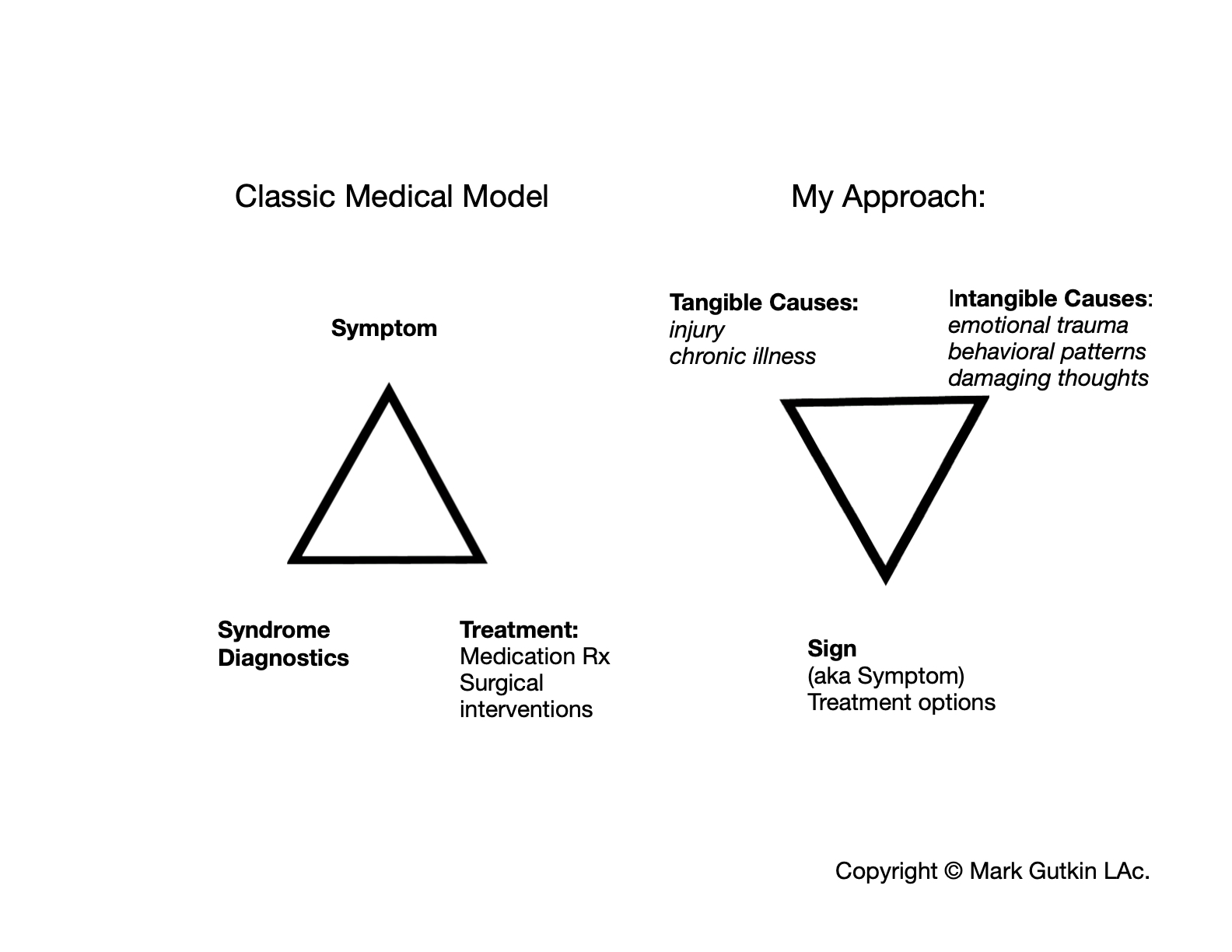My Approach
Confucius said, ‘They must often change, who would be constant in happiness or wisdom.
In my more than fifteen years of practicing Acupuncture and Traditional Chinese Medicine, I’ve noticed that each year brings a change in our ways of thinking or seeing issues, symptoms, or complaints. That calls for a new approach that is not necessarily ‘protocol’. Chinese Medicine discovers symptoms by analyzing patterns. The trick is not to get fixated on naming a specific ailment but instead to find reasons why it became a problem in the first place. This approach will feel very different to you than a visit to your Western-trained physician. See the diagram below. For example, you will note that I often don’t ask what your symptoms are (at least not right away) because Chinese medicine relies on a set of tools such as your pulses —not your pulse rate—, palpation of some acupoints and checking of your tongue, only then we begin to frame our diagnosis.
A classic example is a case of Low Back pain that Western medicine often diagnoses as Lumbago due to either a disk issue (herniation, degeneration, or a bulge) or a muscular instability resulting in a shift of gate and impingement of a nerve ending (Sciatica). Eastern medicine sees it as possibly a pattern of weakness in the Kidney Circuit (not the actual organ) resulting in the patient feeling hot or cold, having hormonal irregularities, digestive and sexual dysfunctions, and often knee and neck issues in addition to Low Back pain. Most Kidney Patterns come from overwork, under-nourishing, overconsumption of stimulants, or carrying an emotional burden such as fear or grief without processing it.
My technical modalities include:
- Traditional Chinese acupuncture with an emphasis on the Five Elements
- Each of the Elements has a series of correspondences involving the season, taste/craving, emotion, sense organ, body tissue, and organ systems (Zang or Fu).
- Distal needling (away from the site of discomfort) especially when a painful syndrome is being treated
- Classical channel physiology (mapping the body’s twelve meridians onto the site of an ailment)
- Japanese systems (i.e Adrenal Release – primarily for the treatment of trauma or shock)
- Tan Balancing Method
- Korean systems:
- Su Ji or Sujok Therapy translated as hand and foot acupuncture
- Kyo-Jung, also known as “Korean Physical Manipulation”
- Trigger point release (if all above did not bring a desired outcome)
- Eastern Nutrition
- Lifestyle modification
My philosophy of practice is based on the inside–out approach to promote or jumpstart the body’s natural defense systems for the improvement and maintenance of good health. A vital part of my work is an impartment of all aspects of a patient’s lifestyle such as diet, vocational, emotional, and physical.

